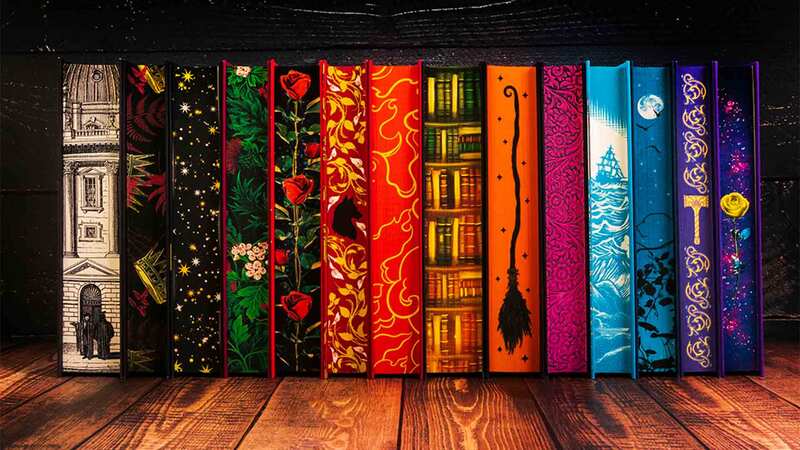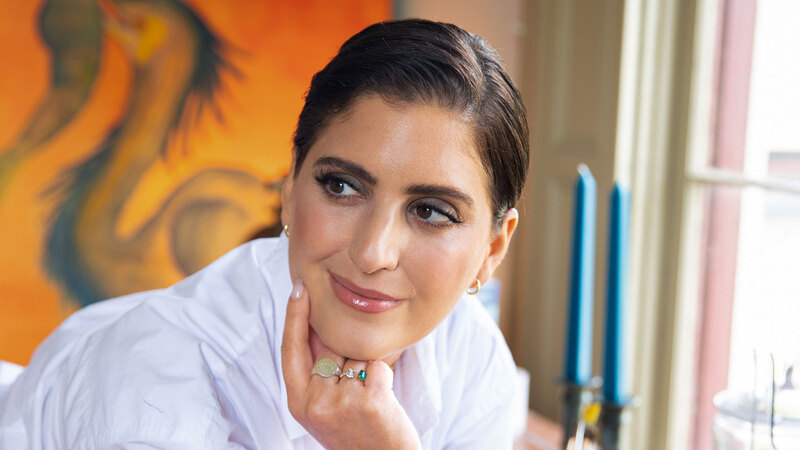You are viewing your 1 free article this month. Login to read more articles.
Oliver Jeffers' true stories
“Hi, I’m Oliver, and this is what I look like.” Oliver Jeffers charmed the Telegraph Bath Festival of Children’s Literature with an event crammed with drawings, jokes and self-deprecation. The author and illustrator – ponytailed and stubbly, like Johnny Depp with added penguins – used an iPad throughout the session to draw live, with the results showing on a big screen. It was a fantastic way of understanding the simple brilliance of his art.
Jeffers started by telling the story of his life, including some surprisingly adult mentions of the Irish Troubles, which first caused his parents to leave for Australia and then, when he was back in Belfast year after, Jeffers himself emigrated to New York. But he quickly moved on to talking about storytelling with undisguised passion.
There are three things you need to do drawing, said Jeffers: something to draw on; something to draw with; and an idea. “I get my ideas from a suitcase I keep under my bed,” he said. Jeffers claimed, wryly, that his “are all true stories” and encouraged children to be active in their tale-telling: “Does TV love you?” he asked. “It doesn’t love me.” He told would-be artists to “Always carry a sketchbook, because you’ll never know when you have an idea.”
Talking through some of his inspirations, Jeffers described how The Hueys – his recent book about conformity and peer-group behaviour – was inspired by his grandfather, who has 24 grandchildren and 19 great-grandchildren, and calls them all “Huey” rather than try to remembers their names. And Lost and Found, his much-treasured story of a penguin and a little boy who make friends, was written after he read a story about a boy who stole a baby penguin from Belfast zoo and had to look after it at home overnight before the zoo could come and pick it up.
The event was a masterclass in visual storytelling. Alongside live drawings, Jeffers showed pictures from his books, his own childhood scribbles and fan pictures of penguins – including one that deviated somewhat from his vision by including laser eyes and stomping on buildings. And Jeffers didn’t just read The Hueys aloud: he live-illustrated the whole book.
There were some top tips for wannabe writers from the author too, some more serious than others:
- you always have to have a pencil
- you always have to keep practising
- you have to share your ideas
- you can never read enough books
- you really have to have a writer’s jacket, possibly green
- you need a window to stare pensively out of
- if a story is not going well, add in an elephant
- if that doesn’t work, make it a flying elephant
- if that doesn’t work, make it a flying elephant on fire
- if that doesn’t work, make it a flying elephant on fire with laser eyes
- if that doesn’t work, forget the elephant
- never, ever eat anything the size of your head in one go
- if your mum says no, go and ask your dad.
As far as future plans go, Jeffers confirmed that his next book, out in 2013, will be a sequel to The Hueys. “I was going to call is A Brief History of Political Conflict,” he joked, “but instead I’ve gone for It Wasn’t Me.” He also said he would like to work with the director behind the adaptation of Lost and Found again, raising the possibility of another Jeffers-based film.
Children can be the harshest critics, and one little girl asked at the end: “How come you’ve just been telling jokes the whole time?” Gentle Jeffers replied: “Perhaps because I have nothing of value to say.”
Nothing could be further from the truth.
-----------
Before the festival, we caught up with Oliver Jeffers about his new book This Moose Belongs to Me (out now published by HarperCollins Children’s Books) and his other work. Here’s what he had to say.
We Love This Book: Can you tell us a bit about the creative process behind This Moose Belongs to Me?
Oliver Jeffers: I've been collecting old paintings for years to add to my library of potential collage material, figuring they'd come in handy one day. Last year, I started painting on top of them in my fine art practice, adding in things to the scene – usually some disaster crashed into the peaceful scene. When I started creating the story of Wilfred and his Moose, I knew I wanted to return to a more organic process (as Stuck was made entirely of digital composites) and thought I'd use oil paints for the first time in a book. I've used oils in my fine art practice for years, so I was no stranger to them. When it came to thinking about their landscape, my mind just made a jump to this collection of old paintings, and it was a connection that just made sense – use them and reappropriate them to form the background that this story about ownership would play out on.
WLTB: What other artists/illustrators' work do you keep coming back to?
OJ: Shamefully, I don't keep much of a finger on the pulse of what’s going on. Which is probably both a good thing and a bad thing. Bad in that I'm not kept abreast of much wonderful work that’s happening, and good because I'm not trying to keep up with trends.
WLTB: You used to be a book jacket illustrator – what was it like?
OJ: I just recently illustrated two or three book jackets, and even then, apart from one case I can think of, I illustrated the interiors too. I suppose I liken good book jackets with good poster design: it takes a while juggling things around so the information is clear, the message is being properly communicated and it looks 'right'. I can't tell you what the criteria for looking 'right' is though, it’s just a gut thing. As far as illustrating other people’s ideas, as I say it’s only happened once or twice, but in all cases I immediately knew how I could visualize their stories. It’s an immediate reaction. It’s the same process as deciding what commercial jobs to take on. If I immediately know what I can do, and feel excited by it, I take it on.
WLTB: You've mentioned that you were not very academic at a child – did any books inspire you? Do you hope your books will get children into reading?
OJ: That’s true, I wasn't. I would much prefer to play in the street than learn things. But in reality I was learning just as much playing in the street: how people interact, social relationships etc. These things are important. I suppose I was rebelling against books because I 'had to' read them. I didn't like being told what to do. Still don't. The first book I read for enjoyment, rather than for homework, was the BFG by Roald Dahl, and that changed a lot of things. As far as my books getting children into reading, that’s not their objective, but it would be nice if they were. Books are important, but people have to figure that out for themselves.














